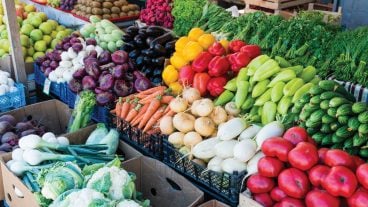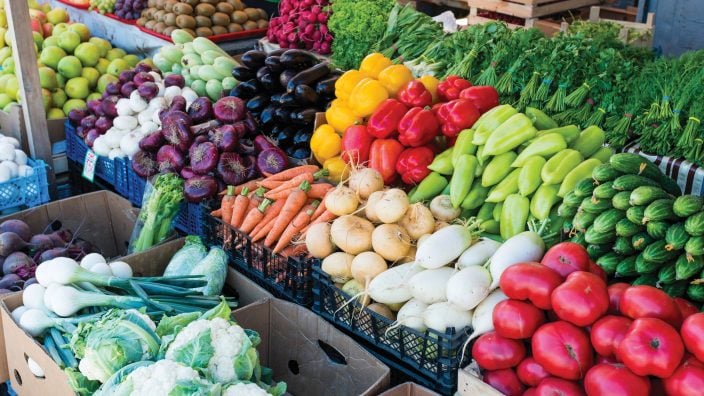Farmer’s Guide to Trucking Regulations available to Ohio Farm Bureau members
The guide includes a farm driver checklist, overview of state and federal regulations and exemptions, CDL qualifications and more.
Read More
1 Water source
This could be a well, irrigation pond, irrigation ditch, river, etc.
2 Pump
Depending on location and volume/pressure requirements, this can vary.
3 Backflow prevention
This prevents any foreign material, fertilizer or contaminants from flowing back into the water source.
4 Pressure regulator
Depending on the type of emitters, the pressure that this device regulates to can vary widely. This not only reduces the pressure, but can work to keep pressure consistent.
5 Filter
There are varying types of filters, but all serve to remove particulates from the water that could plug emitters.
6 Injector
These are used to apply water-soluble fertilizers through the irrigation kit.
7 Adapters
These vary, but are used to connect various different types of equipment and irrigation lines.
8 Distribution lines
These move water from the water source to the location of application.
9 Submain lines/headers
These water lines enter the field and distribute water to the emitters.
10 Emitters
Drip tape or overhead sprinklers apply the water to the crop.
Next Week: Choosing an irrigation system.
Source: Irrigation considerations for the small vegetable farm, Michigan State Extension.
(Farm and Dairy is featuring a series of “101” columns throughout the year to help young and beginning farmers master farm living. From finances to management to machinery repair and animal care, farmers do it all.)


The guide includes a farm driver checklist, overview of state and federal regulations and exemptions, CDL qualifications and more.
Read More


The Small-Scale Food Business Guide covers federal and state regulations for selling food products such as raw meat, dairy, eggs, baked goods, cottage foods, fruits and vegetables, honey and more.
Read More

ODA will enroll 500,000 acres into the program for a two-week sign-up period, beginning April 22, 2024, through May 6, 2024. Contact local SWCD offices to apply.
Read More

Katie Share of Columbus has been named ExploreAg and Youth Development Specialist for Ohio Farm Bureau.
Read More

Mary Klopfenstein of Delphos has been named Young Ag Professional and Ag Literacy Program Specialist for Ohio Farm Bureau.
Read More

The plan has been updated to give sole proprietors access to more rate stability and a smart solution that offers potential savings on health care.
Read More

The American Farm Bureau Federation, in partnership with Farm Credit, is seeking entrepreneurs to apply online by June 15 for the 2025 Farm Bureau Ag Innovation Challenge.
Read More

Adele Flynn of Wellington has been elected treasurer of the Ohio Farm Bureau Federation and now holds the third highest elected office in Ohio’s largest and most influential farm organization.
Read More

Producers are urged to work with their veterinarian to practice enhanced biosecurity measures and review and limit cattle movements within production systems.
Read More

The changing seasons bring with them the need to thoroughly inspect pole barns for any damages that may have occurred during the winter months.
Read More